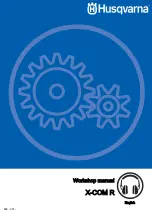
Functions
2.7 Teleprotection for Distance Protection (optional)
SIPROTEC, 7SD5, Manual
C53000-G1176-C169-5, Release date 02.2011
211
Figure 2-101
Transient blocking for permissive schemes
2.7.13
Measures for Weak or Zero Infeed
In cases where there is weak or no infeed present at one line end, the distance protection will not pick up.
Neither a trip nor a send signal can therefore be generated there. With the comparison schemes, using a per-
missive signal, fast tripping could not even be achieved at the line end with strong infeed without special mea-
sures, as the end with weak infeed does not transmit a permissive release signal.
To achieve fast tripping at both line ends in such cases, the distance protection provides special supplements
for feeders with weak infeed.
To enable also the line end with the weak infeed to trip, devices of the 7SD5 type feature a weak infeed tripping
supplement. As this is a separate protection function with a dedicated trip command, it is described in a sepa-
rate section (refer to Section 2.11.2).
Echo Function
If there is no fault detection at one line end, the echo function causes the received signal to be sent back to the
other line end as an „echo“, where it is used to initiate permissive tripping.
The common echo signal (see Figure , Section 2.11.1) is triggered by both the distance protection and the earth
fault protection. Figure 2-102 shows the generation of the echo release by the distance protection.
The detection of the weak infeed condition and accordingly the requirement for an echo are combined in a
central AND gate. The distance protection must neither be switched off nor blocked as it would otherwise
always produce an echo due to the missing fault detection. If, however, the time delayed overcurrent protection
is used as an emergency function, an echo is nevertheless possible if the distance protection is out of service
because the fault detection of the emergency time overcurrent protection replaces the distance protection fault
detection. During this mode the emergency time overcurrent protection must naturally not also be blocked or
switched off.
Even when the emergency overcurrent protection does not pick up, an echo is created for permissive release
scheme during emergency function. The time overcurrent protection at the weaker end must operate with more
sensitivity than the distance protection at the end with high infeed. Otherwise, the selectivity concerning 100%
of the line length is not given.
The central condition for an echo is the absence of distance protection or overcurrent protection fault detection
with the simultaneous reception of a signal from the teleprotection scheme logic, as shown in the corresponding
logic diagrams (Figure 2-91 or Figure 2-93).
When the distance protection picks up single-pole or two-pole, it is nevertheless possible to send an echo if the
measurement of the phases that have not picked up has revealed weak infeed.
















































